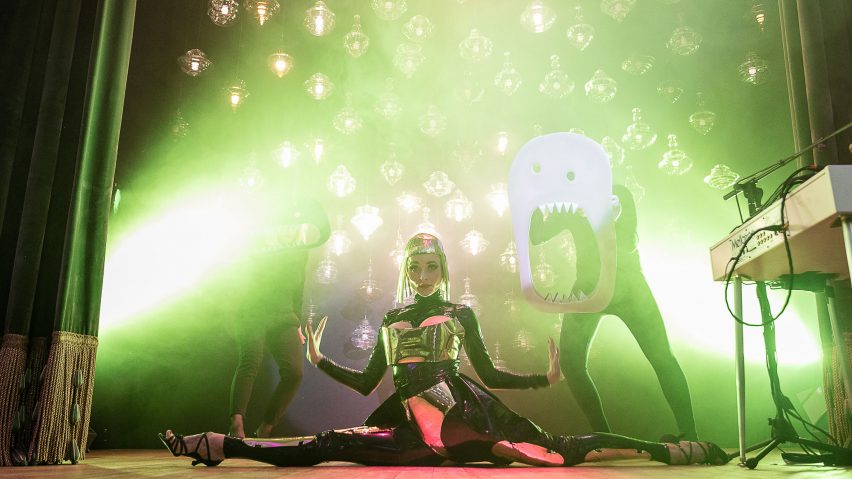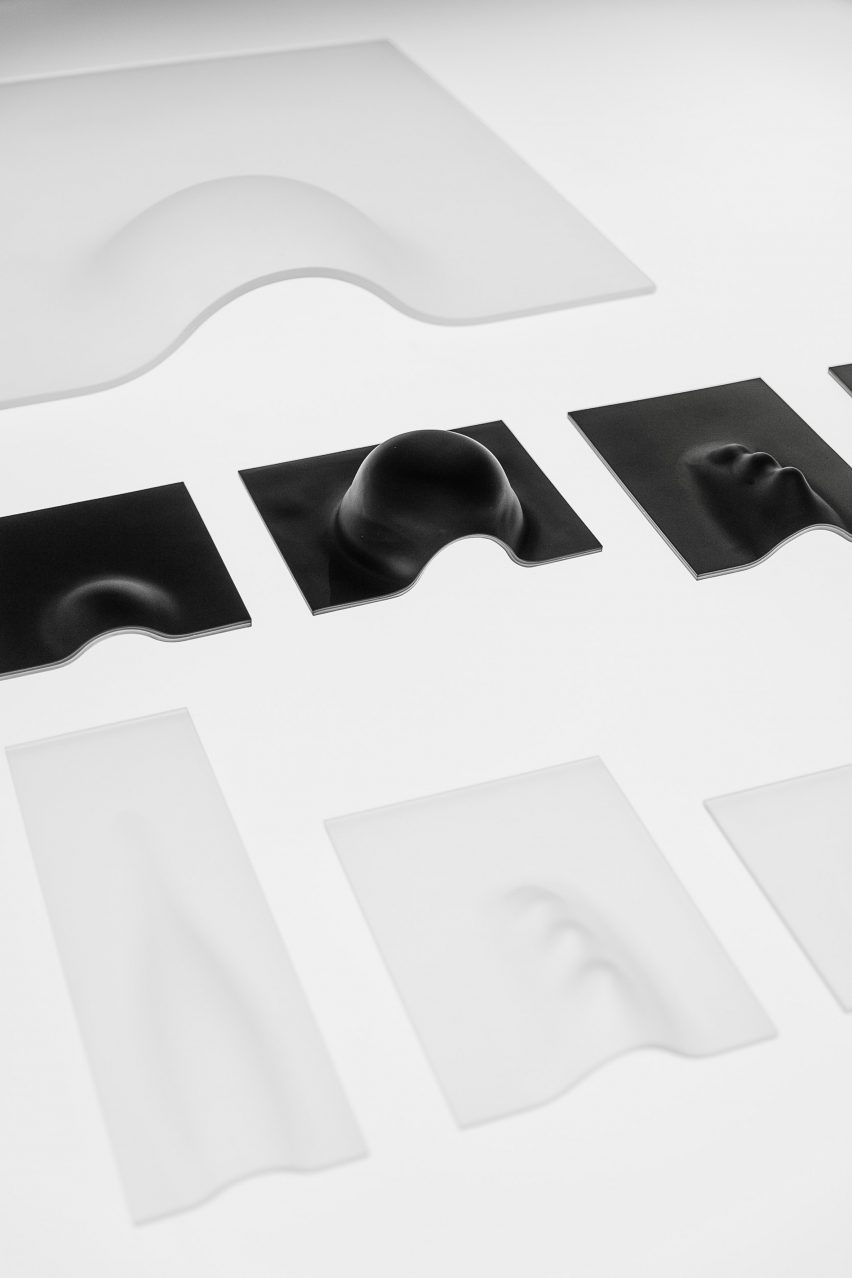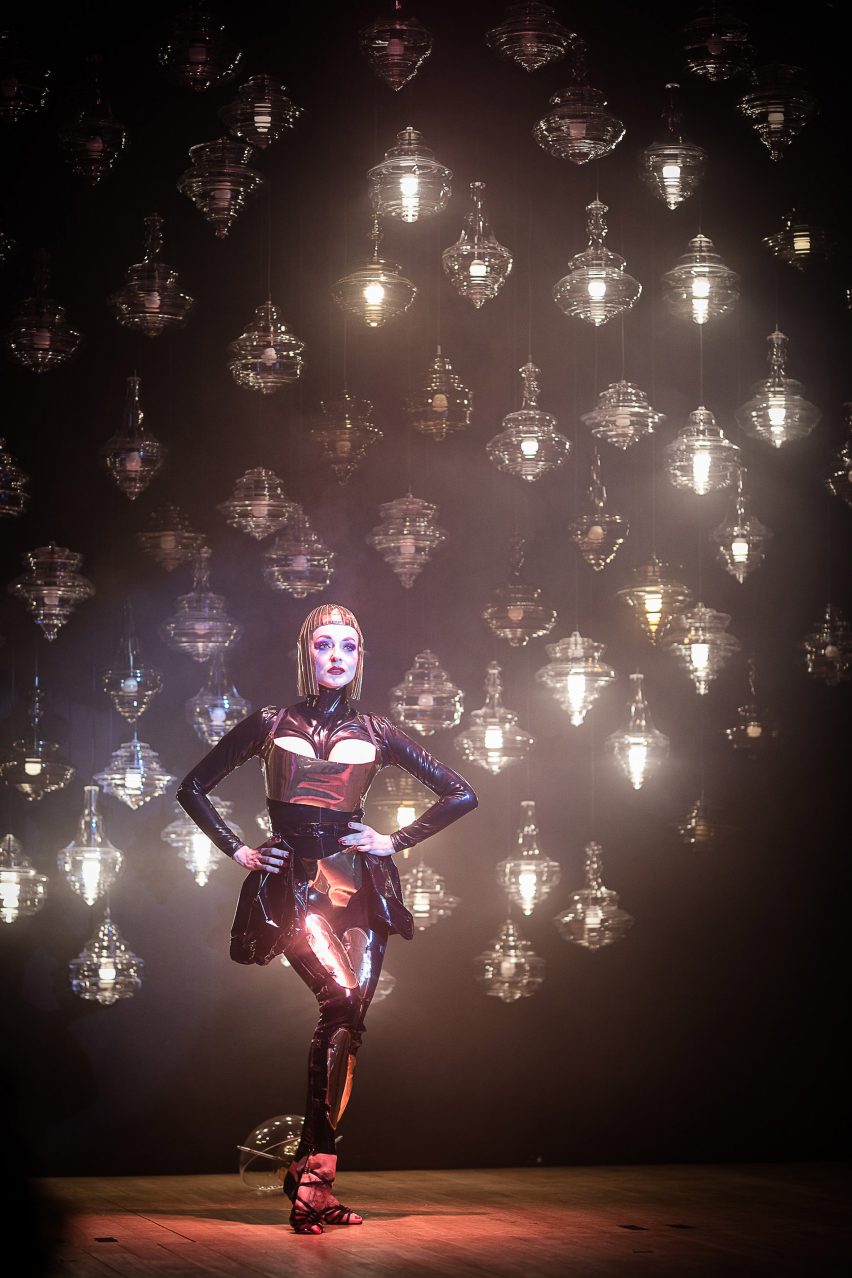
Glass monsters invade Milanese theatre for Lasvit's Monster Cabaret exhibition
A mirror covered in eyeballs, creatures from outer space and a spiky sex toy all feature in this set of miniature monsters from glassware brand Lasvit.
For the duration of Milan design week, the Czech company took over decadent 19th-century puppet theatre Teatro Gerolamo to showcase 18 glass monsters, created by designers from all over the world.

This collection of creatures, which also includes a one-eyed dog and pair of Japanese warriors, was presented alongside glamorous burlesque dance performances.
Lasvit described the project as "a show full of beasts, antiheroes, vicious genius minds, egos, outcasts and fantastical creatures".
"We wanted to show the exceptional Monster collection in a different, edgy, daring way," explained brand founder Leon Jakimič.

Designer duo Maurizio Galente and Tal Lancman presented a mirror decorated with dozens of pale pink eyes, green scales and sharp teeth. They call it Who's Looking At You.
"The idea was spawned by the beloved monster who stares back at us when we look into a mirror," said the pair.

Italian architect Alessandro Mendini designed a set of ghostly vases with colourful features, while Brazilian duo Fernando and Humberto Campana have created a pair of "monsters from outer space" with lumpy skin.

For Italian designer Fabio Novembre, the monster is a decorative glass sex toy with five "limbs", based on the form of Leonardo Da Vinci's Vitruvian man.
"Toyboy is built with traditional decorations of Bohemian glass, but in a scale that hints at the world of sex toys," said the designer.

The Manabi Monsters by Stanislav Müller are a pair of warriors – the master Sensei and the follower Gakusei – that reference Japanese comic books, while Rosencrantz and Guildenstern are cloud-like characters named after characters in Shakespeare's Hamlet. Designed by architect Daniel Libeksind, they are made from a glass that changes colour in different lighting conditions.
"The luminosity and changing colours are the surprising voice of these monsters!" said Libeskind.

The collection includes several monsters based on mythical stories. Austrian designer Raja Schwahn-Reichmann based her one-eyed dog on a creature from Swiss fairy tales, while German designer Moritz Waldemeyer wanted to bring two evil Persian spirits to life with his light-up designs.
"The Ghoul is a grave-digging spirit which devours the dead. Jen, on the other hand, is an evil spirit who takes possession of people’s bodies and inhabits them," said Waldemeyer.

Similarly, Canadian studio Yabu Pushelberg has created three characters based on the Japanese folklore of Tsukumogami, whereby empty vessels can gain a soul once they have been useful for 100 years. Their names are Shiin, Uro-Uro and Jiro-Jiro.
"Not only are the words themselves fun and have creepy/curious meanings, but we like the idea that they each personify the object," said the studio founders George Yabu and Glenn Pushelberg.

Milan-based design consultant Stephan Hamel contributes a series of simple and colourful creations, as does Dutch designer Maarten Baas, who imagines his designs as fossils of creatures that "kill and crunch their prey".
"Recent digs in The Netherlands have discovered something interesting – fossils of small monster beasts, ones with remarkably sharp teeth, were found between the various layers of clay and sand," he said.

The collection also includes two designs by Lasvit's art director Maxim Velčovský: a seven-metre-high tower of frosted glass television screens, described as the monster "to rule them all", and two abstract portraits of former Soviet leader Lenin.
Other additions include a sand-blasted skull by Martin Janecký, a series of mysterious monsters by Nendo, a dragon by Jaroslav Brychta, a guardian dog by Vladimír Kopecký and a martian by René Roubíček.

Lasvit was founded in 2007 by Leon Jakimič. The company often presents at Milan design week, but this is one of the brand's most ambitious exhibitions to date. It earned the brand the prestigious Milano Design Award 2018 for best exhibition in the city.
"Being given this award just underlines our vision to be the most inspirational glass-making company in the world," said Jakimič.

The exhibition also showcased a number of older products from the company, including Cipher by Yabu Pushelberg and Yakisugi by Kengo Kuma, inside booths surrounding the theatre.
The backdrop to the stage comprised 108 of the Neverending Glory pendant lights by Jan Plecháč and Henry Wielgus.